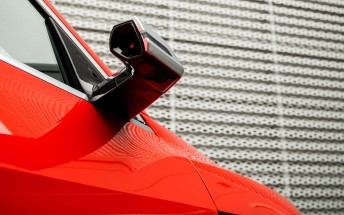Counterclockwise: water resistant phones

Water was never a friend to electronics, but there have always been phones with an adventurous spirit that have protection against the elements. The Benefone Esc! from 1999, famous for being the first cell phone with a built-in GPS receiver, was shock and water resistant. But that was before phones were given official IP codes, so we'll fast forward to 2008.
But first, a crash course on what the numbers mean. The first digit measures the protection against solid particles, the second is protection against liquids. We'll focus on the second digit.
| IPX3 | Spraying water |
| IPX4 | Splashing of water |
| IPX5 | Water jets |
| IPX7 | Immersion, up to 1 m depth |
| IPX8 | Immersion, 1 m or more depth |
We'll be looking at weighted averages again (scaled by reader interest). This is because in the early days, something like the Sonim XP3 Enduro was one of the few water resistant options (IP67). This was a niche rugged handset and only a few people got one.

Things chug along slowly until relatively recently. In 2013, the Xperia Z wrote the rulebook for a Sony flagship and that included water resistance. The next year the Samsung Galaxy S5 also secured an IPX7 rating, though the S6 didn't follow suit (and that partially explains the dip in 2015). Then Apple joined the party in 2016 with the iPhone 7.



Sony Xperia Z • Samsung Galaxy S5 • Apple iPhone 7
Samsung and particularly Apple are perhaps the strongest in their ability to influence consumer tastes. Sony definitely left its mark too. The first generation Pixel phones started with splash resistance and upgraded to proper water resistance in later models.
Some Motorolas are IP-rated as well, though most have a special coating on the internal components that makes them splash-proof (but doesn't stop water from getting in).
Not that it makes a ton of difference. No manufacturer actually recommends going for a swim with your phone, so the depth didn’t matter. The water resistance was there to guard against accidents (e.g. spilled water or dropping the phone in the can).
Water resistance requires rubber seals on all openings, which increases complexity and cost. There have been a couple of gimmicky hole-less phones, but the general trend in smartphone design is there. For example, recent LG and Huawei flagships replaced the earpiece with an acoustic display. Soon phones may be waterproof by default as they will be sealed completely shut - no ports, no buttons, no nothing.
Related
Reader comments
- AnonD-1046991
- 18 Jun 2022
- G}T
I don't have any old tough phone but I sticked to E63 was fingerprint-proof case. I don't buy any phone contain fake-manufactured "tough" phone.
- Denis Thomas
- 14 Apr 2019
- 3Ag
Tap water isn't effecting the watertight seals around the phone. Only chlorinated and especially sea water damage the watertight seals with time. Sony advices to clean your device with tap water if your phone gets in contact with any other liquid oth...







 Samsung
Samsung Xiaomi
Xiaomi Samsung
Samsung Nothing
Nothing Samsung
Samsung


